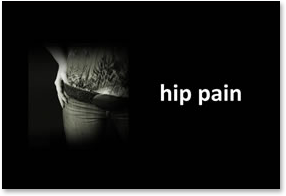Hip Pain

The hip joint is probably the most stable mobile joint in the body and is one of the least likely to become dislocated.
The hip joint is made up of two main bones – the femur or “thigh bone” and the pelvis. The head of the femur fits into the pelvis in a “ball-and-socket” manner.
The head of the femur is held in place by three very strong ligaments which are in-turn supported by the surrounding pelvic muscles and tendons.
There are also many bursa or fluid filled sacs around the hip that allow muscles and tendons to glide easily accross one another.
When all of these parts are working together we are able to stand and walk without difficulty.There are many parts of the hip joint that may become painful from over-use, injury or muscle imbalances.
Inflammation of the bursa or tendon are probably the most common sources of pain in the hip.
A tear in one of the muscles can also cause serious pain.
And just like in any other joint in the body, arthritis of the joint can become an overwhelming problem.
Any of these situations can cause enough pain to make it more difficult to stand or walk.
Restful sleep can also be difficult depending on the area of the hip that is inflammed.The first step to reducing pain is to first determine where the pain starts.
This is typically accomplished by your physician listening to how your pain started and recognizing what makes your pain worse as well as with thorough physical examination of your painful area.
X-rays, MRI, and special nerve and muscle testing may also be used to take better evaluate your condition.
Once the main problem is identified, then a treament plan can be started to treat it at its source.Surgery is not always the answer.
Most surgeons would not want to operate on your hip if there is another way of treating your condition.
There are certain situations where surgery may ultimately be needed. However, you want to try all means of conservative treatment before undergoing an operation on your hip.
There are many types of minimally invasive joint injections that we may be able to use that may reduce your pain quickly.
Injections are typically used when the pain is so severe that it prevents you from working, performing any type of exercise, or if you cannot progress through the exercise program because of the pain.
Ultimately, it will take a little time, persistence, teamwork and dedication to your health to help reduce or eliminate your pain.
Make an appointment today so that we can help you begin your road to recovery and less pain.
